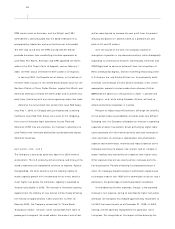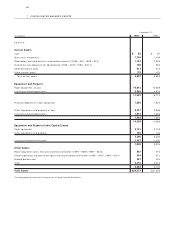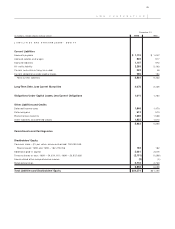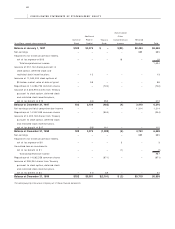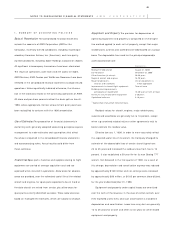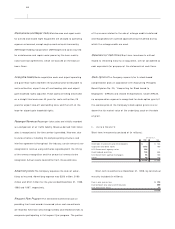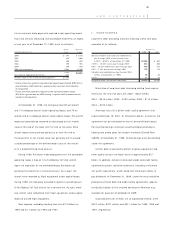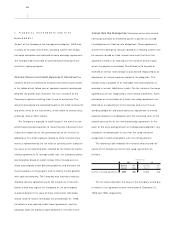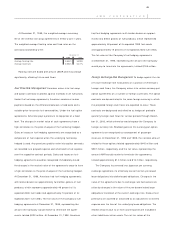American Airlines 1999 Annual Report Download - page 44
Download and view the complete annual report
Please find page 44 of the 1999 American Airlines annual report below. You can navigate through the pages in the report by either clicking on the pages listed below, or by using the keyword search tool below to find specific information within the annual report.
AMR CORPORATION
43
1. SUMMARY OF ACCOUNTI NG POLICIES
Basis of Presentation The consolidated financial statements
include the accounts of AMR Corporation (AMR or the
Company), its wholly owned subsidiaries, including its principal
subsidiary American Airlines, Inc. (American), and its majority-
owned subsidiaries, including Sabre Holdings Corporation (Sabre).
All significant intercompany transactions have been eliminated.
The results of operations, cash flows and net assets for Sabre,
AMR Services, AMR Combs and TeleService Resources have been
reflected in the consolidated financial statements as discontinued
operations. Unless specifically indicated otherwise, the informa-
tion in the footnotes relates to the continuing operations of AMR.
All share and per share amounts reflect the stock split on June 9,
1998, where appropriate. Certain amounts from prior years have
been reclassified to conform with the 1999 presentation.
Use of Estimates The preparation of financial statements in
conformity with generally accepted accounting principles requires
management to make estimates and assumptions that affect
the amounts reported in the consolidated financial statements
and accompanying notes. Actual results could differ from
those estimates.
Inventories Spare parts, materials and supplies relating to flight
equipment are carried at average acquisition cost and are
expensed when incurred in operations. Allowances for obsoles-
cence are provided, over the estimated useful life of the related
aircraft and engines, for spare parts expected to be on hand at
the date aircraft are retired from service, plus allowances for
spare parts currently identified as excess. These allowances are
based on management estimates, which are subject to change.
Equipment and Property The provision for depreciation of
operating equipment and property is computed on the straight-
line method applied to each unit of property, except that major
rotable parts, avionics and assemblies are depreciated on a group
basis. The depreciable lives used for the principal depreciable
asset classifications are:
Depreciable Life
Boeing 727-200 aircraft August 31, 20031
DC-10 aircraft December 31, 20001
Other American jet aircraft 20-30 years
Regional aircraft and engines 16-20 years
Major rotable parts, Life of equipment to
avionics and assemblies which applicable
Improvements to leased flight equipment Term of lease
Buildings and improvements
(principally on leased land) 10-30 years or term of lease
Furniture, fixtures and other equipment 3-20 years
Capitalized software 3-10 years
1Approximate final aircraft retirement date.
Residual values for aircraft, engines, major rotable parts,
avionics and assemblies are generally five to 10 percent, except
when a guaranteed residual value or other agreements exist to
better estimate the residual value.
Effective January 1, 1999, in order to more accurately reflect
the expected useful life of its aircraft, the Company changed its
estimate of the depreciable lives of certain aircraft types from
20 to 25 years and increased the residual value from five to 10
percent. It also established a 30-year life for its new Boeing 777
aircraft, first delivered in the first quarter of 1999. As a result of
this change, depreciation and amortization expense was reduced
by approximately $158 million and net earnings were increased
by approximately $99 million, or $0.63 per common share diluted,
for the year ended December 31, 1999.
Equipment and property under capital leases are amortized
over the term of the leases or, in the case of certain aircraft, over
their expected useful lives, and such amortization is included in
depreciation and amortization. Lease terms vary but are generally
10 to 25 years for aircraft and seven to 40 years for other leased
equipment and property.
NOTES TO CONSOLIDATED FINANCIAL STATEMENTS



